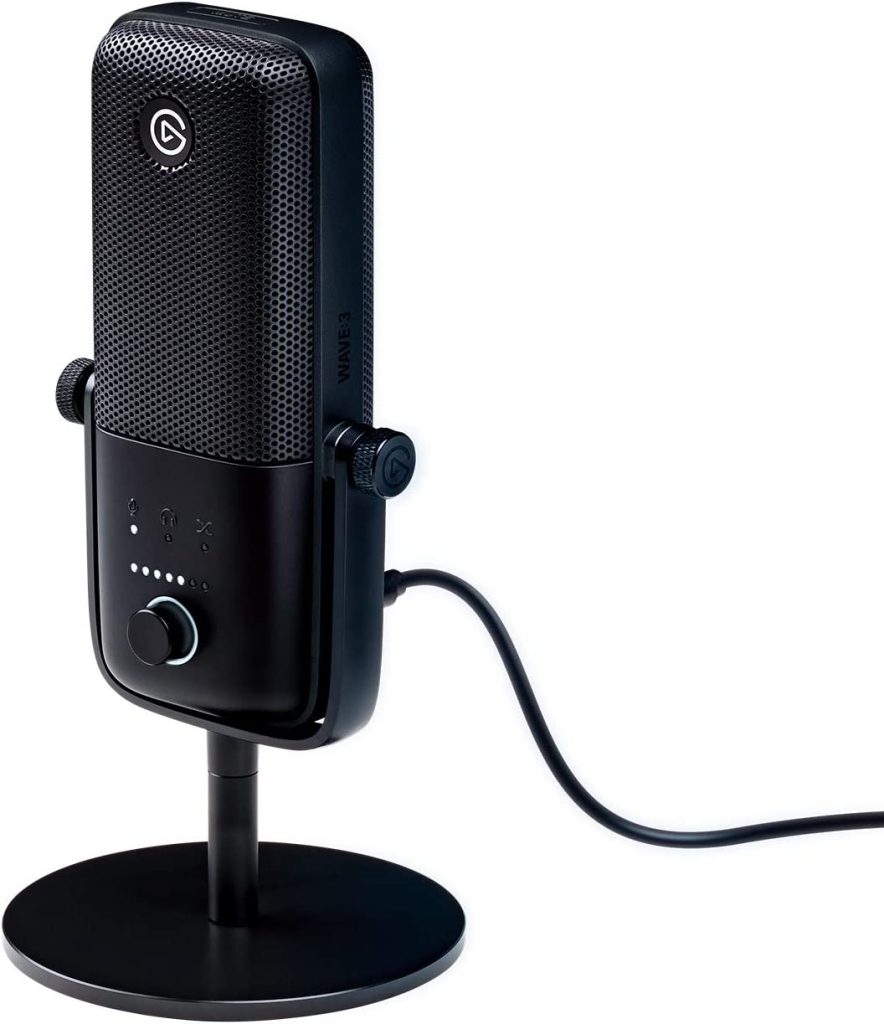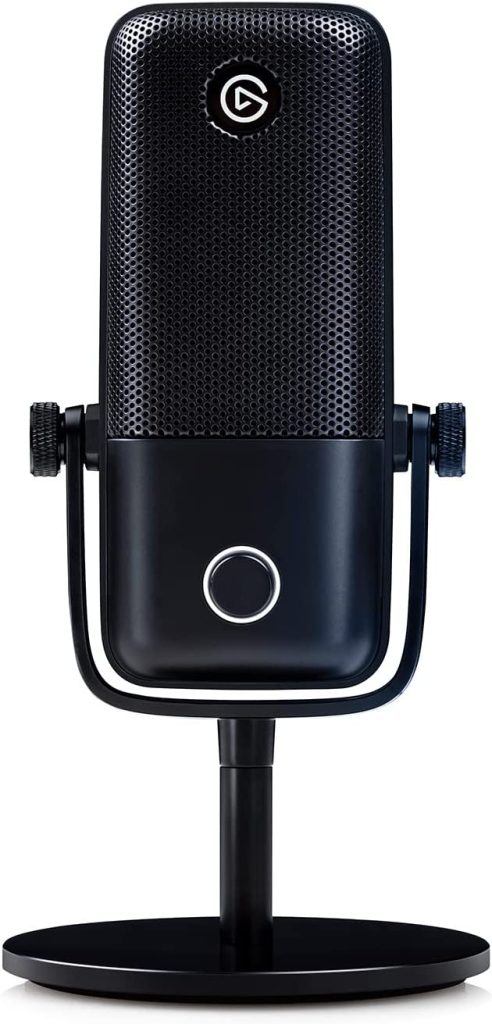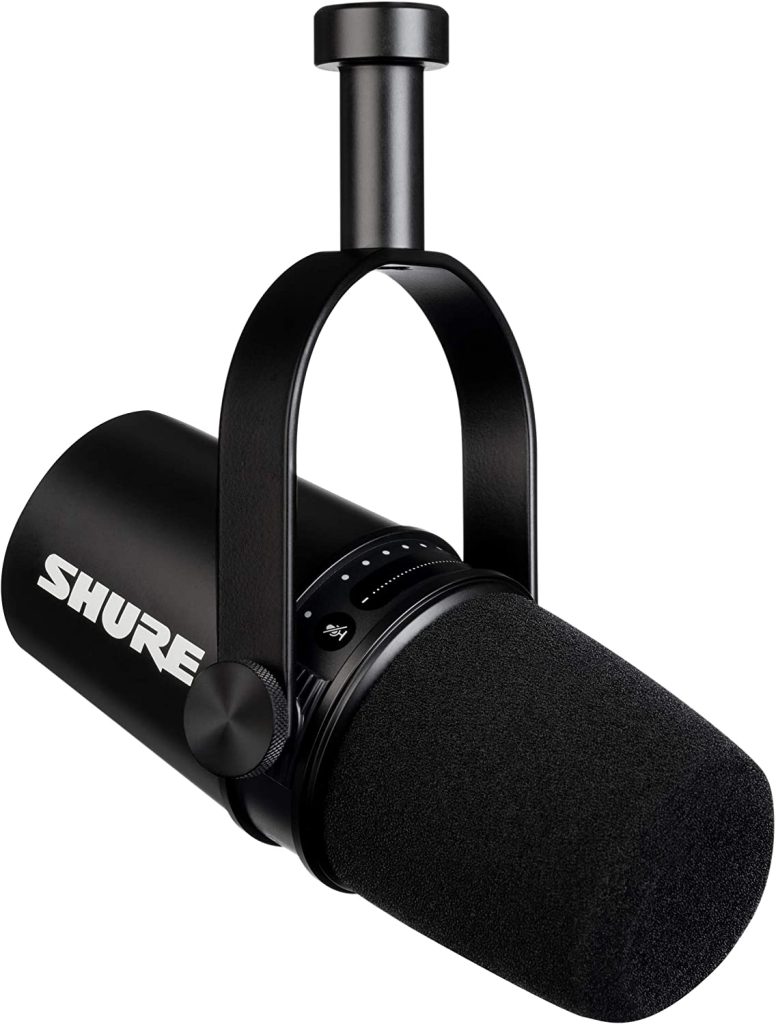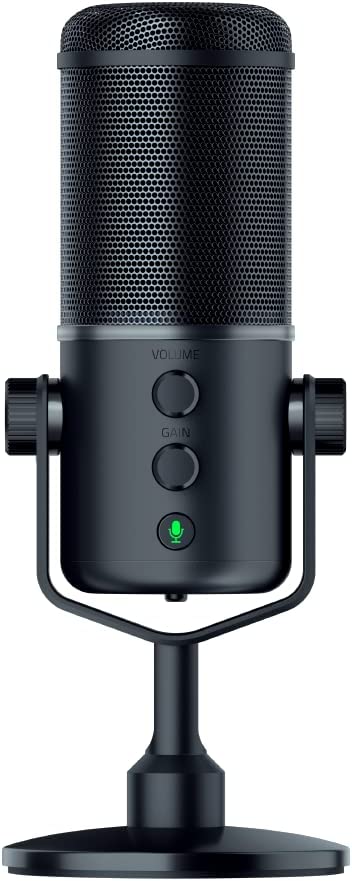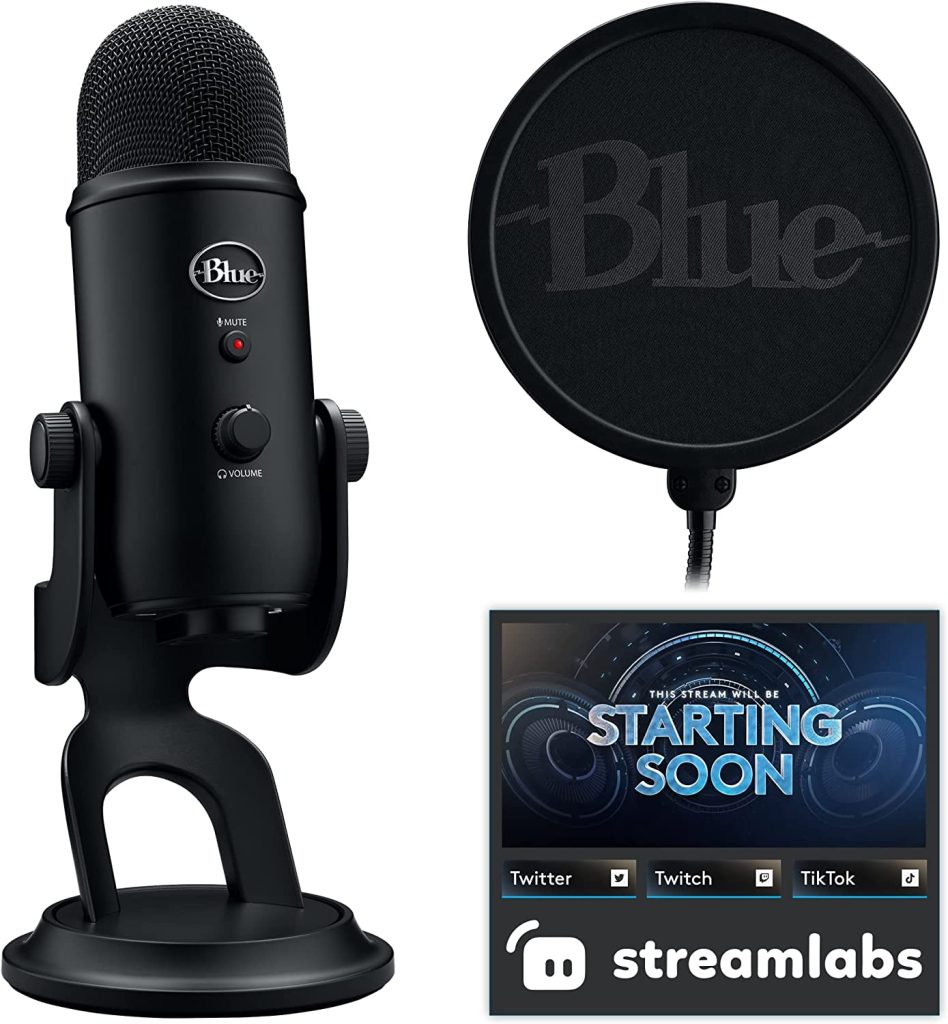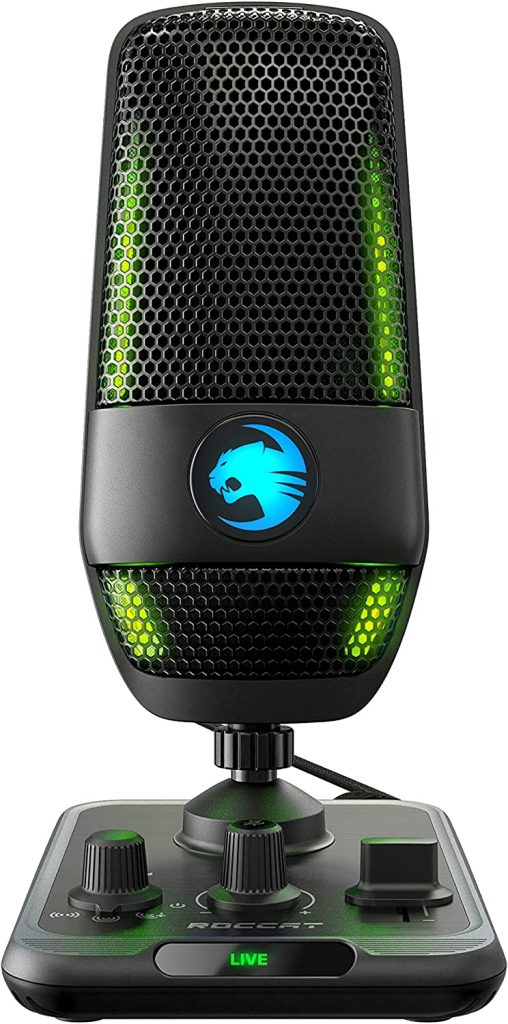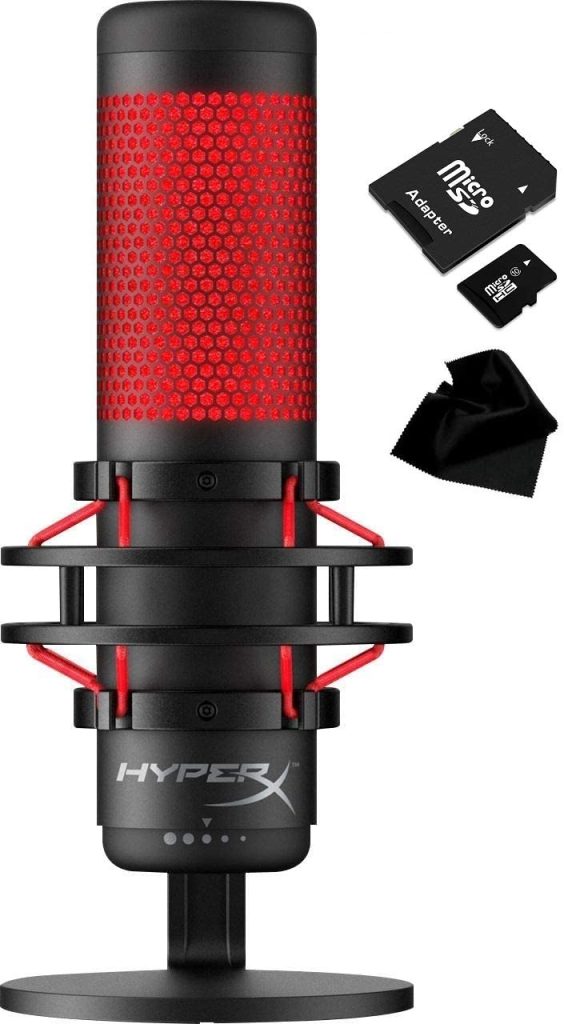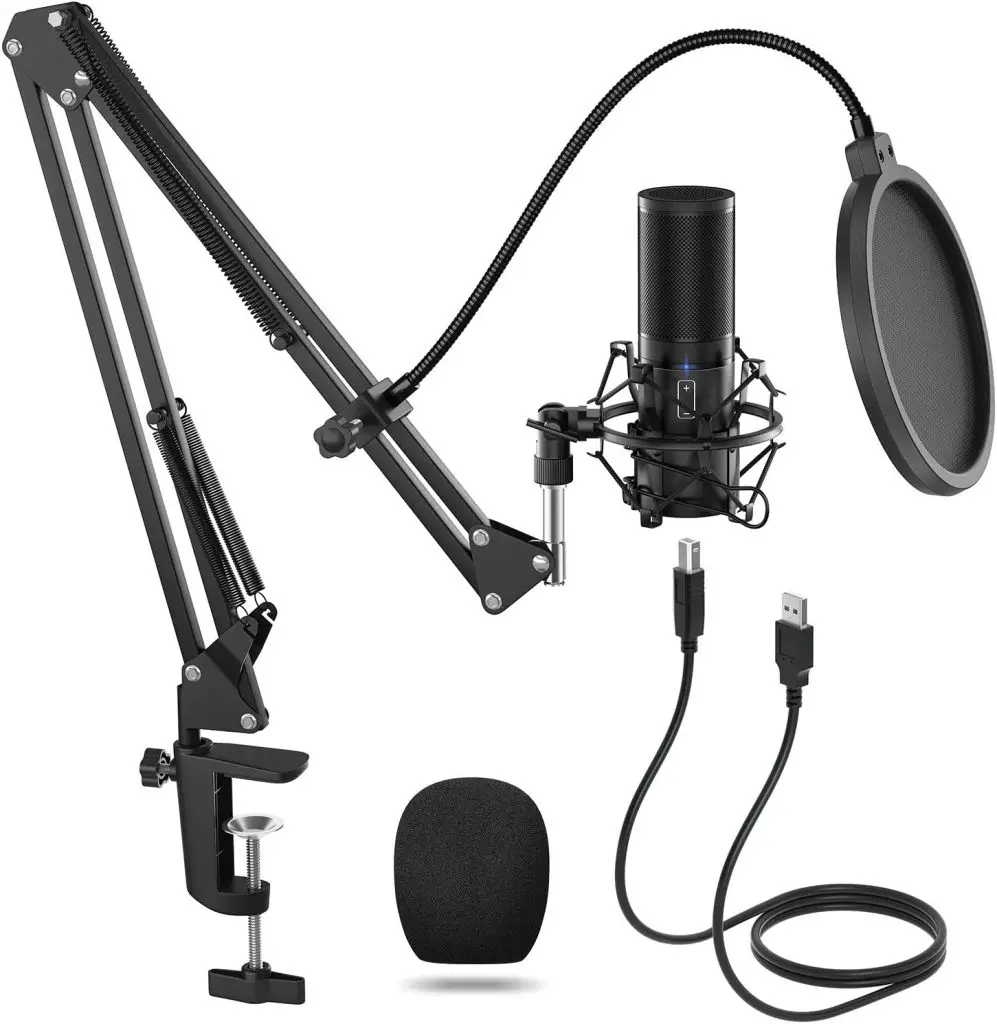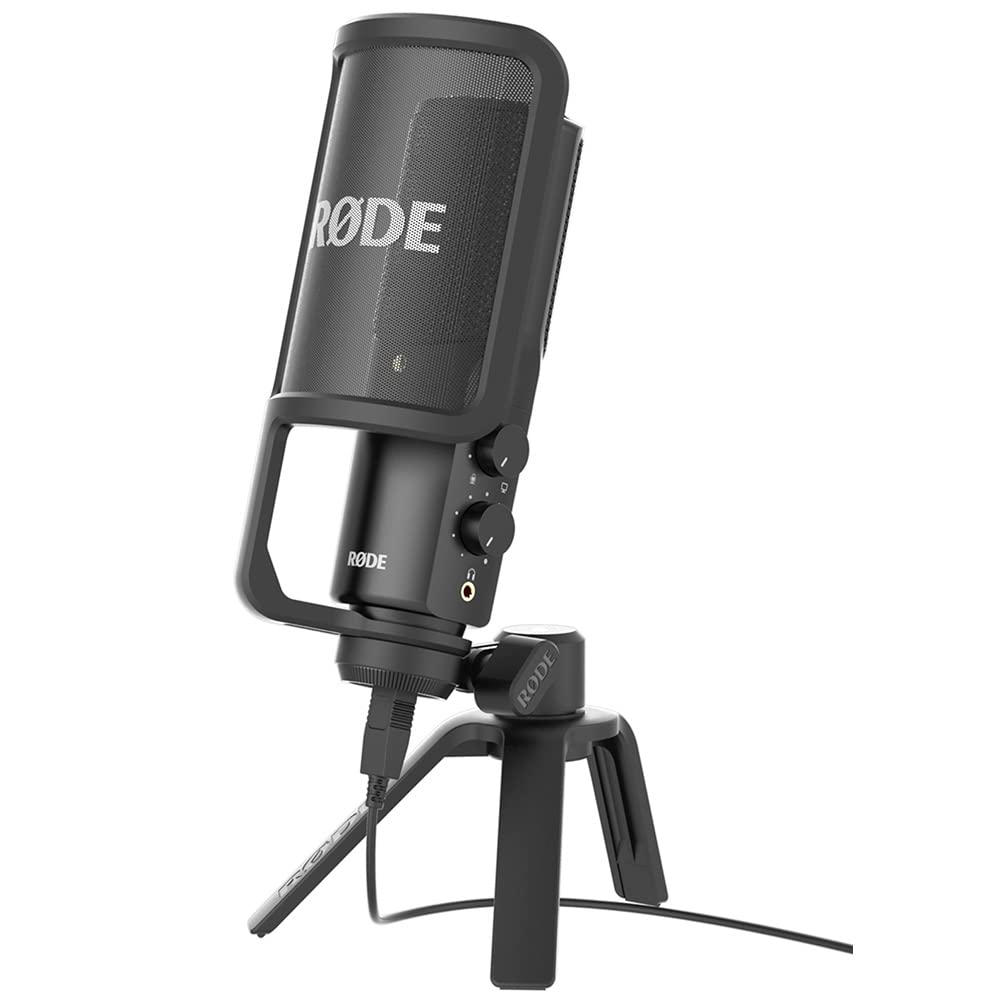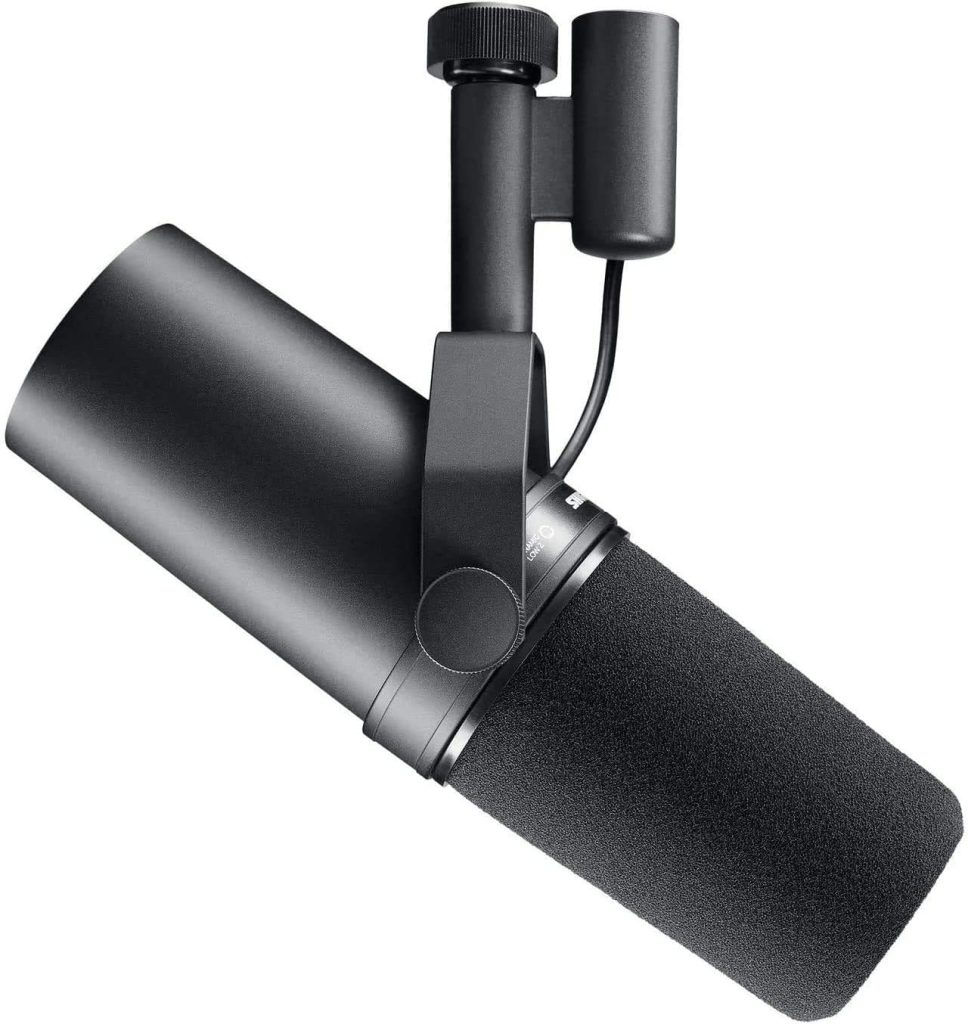More and more people are choosing to start streaming. Whether podcast, gaming, just chatting, or IRL streams, streaming platforms like Twitch or Youtube are getting bigger and bigger. One reason is that nowadays it’s easier than ever to share your life and hobbies with the world. At the same time, the more gamers and streamers there are, the more difficult it becomes to stand out from the crowd and build a loyal community that regularly watches and supports your content.
Whether you stream games on Twitch and work with how to clip on Twitch, YouTube, or any other platform. Your audience needs to be able to hear you clearly during gameplay and in live chats. In fact, mics built into laptops, webcams, and even headsets just don’t sound as good as a stand-alone mic, which you can also position in the best possible way. The good news is that you don’t have to spend a lot of money to do this.
If you are looking for a good microphone for streaming, you have come to the right place. In this article, we are taking a closer look at some of the best and most popular microphones for streaming. Further on, we’ll also go through the most important things to take into consideration when choosing the best microphone for your needs.
Whether you’re playing the latest game or telling your followers exciting stories, in addition to a sharp image, clear and good sound quality is the be-all and end-all for professional streams.
You can achieve this with the right microphone, which is why we go into the most important factors, purchase criteria, and tips in this streaming microphone test and comparison to offer you good help when buying a microphone.
Whether you need a microphone at all, of course, depends primarily on your own requirements for your videos and streams. If you want to create long-term content and build a community, a streaming microphone is part of the basic equipment of your setup and should not be neglected in addition to a streaming camera and good lighting. You can find out which equipment is still important in our gaming and streaming setup article.
Best microphone for streaming
Elgato Wave:3
For a microphone priced at around $170, the Elgato Wave:3 is a microhpne that offers exceptional value for money and has a lot to offer.
Not only does it sound great out of the box, but it can also be further tuned. You can also easily adjust the microphone during the stream thanks to a capacitive mute button and a physical knob that controls microphone gain, headphone volume and fader (i.e. the balance between microphone and PC volume when headphones are connected).
A 24-bit/96kHz analog-to-digital converter and a large condenser capsule sensitive to voices at all volumes guarantee excellent audio quality. The cardioid polar pattern ensures that the focus is on you and not on background noise. Overall, voices sound very natural with the Wave:3 – and the transitions between loud and soft speaking are fluid. Our only gripe is that this mic would sound even better with a little more midrange sharpness.
The Wave:3 also has built-in hardware to reduce unwanted pops – annoying air puffs that occur when you say words that start with letters like p or b. The microphone also reduces distortion that occurs when you speak louder or shout by switching to a secondary signal that picks up your voice at a lower volume.
Streamers with a dual PC setup or using additional non-Elgato microphones may need to look elsewhere, but for most people the Wave:3 is the ideal solution – especially since Elgato’s Wavelink software gives you the control over the audio routing of additional sources.
Pros: Powerful and accurate sound, easy-to-use hardware controls, feature-rich software, sleek design, good value.
Cons: Mic mute, included stand not suitable for serious streamers.
Elgato Wave:1
While the Elgato Wave:1 lacks the more sophisticated features of the Wave:3, it’s definitely not a microphone that should be neglected.
It also has the same good condenser capsule and protection from pops and clipping as the Wave:3. And you get similar sensitivity and tonal clarity: it delivers warm, full low-end tones that blend perfectly with a crisp high end.
Where the model falls short of the Wave:3 is its inferior analog-to-digital converter, which offers a 24-bit/48kHz signal. Less data when digitally capturing your voice means a less faithful rendition, although as mentioned above it still sounds pretty good.
Even more disappointing are the sparse hardware controls. The rotary control on the Wave:1 only toggles microphone mute and headphone volume. You can still control the mic gain and fade through Elgato’s Wavelink PC software, but it’s more cumbersome to operate than with dedicated controls on the mic. We think the Wave:3 is worth the extra cost, but if you’re on a budget, this microphone is still one of the best out there.
Pros: Same great sound profile as the Wave:3, same good software features, same clean and sleek looks, easy-to-use mic mute.
Cons: no dedicated microphone gain/crossover control, inferior ADC compared to Wave:3.
Shure MV7
The MV7 USB microphone is modeled after the well-known audio company’s legendary SM7B – a professional microphone used by singers and countless radio shows for decades. While the MV7 is still aimed at experienced users, it takes far less time to get used to the features.
The dynamic capsule microphone sounds fantastic in the low end and has a smooth, well-defined reproduction of tones in the middle and high end. For the best results you’ll need to tweak the EQ settings with Shure’s easy-to-use MOTIV software, but you’ll get performance similar to the peerless SM7B. The MV7’s professional appeal is aided by its solid build, although the increased weight and lack of an included stand mean you’ll need a strong boom arm to use it effectively. The MV7 is also compatible with XLR connectors, so you can also connect it to a high-end audio system.
However, the MV7 is not for everyone. Its dynamic capsule is better suited for loud voices, and it has a highly directional hypercardioid polar pattern, which limits its uses. The position of the microphone relative to your mouth greatly affects performance. This microphone’s signal is also limited at 24-bit/48kHz.
Most disappointing is the device’s touch panel interface for microphone gain control, mute button, and monitor levels, which can be awkward to use when streaming. But if you have the patience and the right kind of voice, it will make you sound like liquid gold.
Pros: Inspired by a legendary microphone, USB/XLR connectors, easy-to-use software, rugged build
Disadvantages: touch operation, requires more knowledge to operate, micro USB connection, high price
Razer Seiren Elite
The Razer Seiren Elite has specs that put it on par with the best mics in this review.
Like Shure’s MV7, the Razer Seiren Elite features a dynamic capsule that is suitable for many vocal styles, emphasizing low notes and requiring close spacing for consistent output.
This last aspect is beneficial in a noisy environment as it prevents background noise from being picked up. Like Elgato’s Wave:3, the Seiren Elite has easy-to-use controls: a knob for microphone gain, another for headphone volume, and a mute switch. It even features an LED ring on the underside of the grille that lights up when the mic’s built-in compressor kicks in to smooth out high volume peaks.
But while this compact mic generally takes a radio-like approach to mic design and sound signature, its price tag of just under $200 detracts from its appeal when compared to our front-runner, the more affordable Wave:3.
This is particularly true of its analog-to-digital converter, which is limited to a 16-bit/48kHz signal – the basis for a usable signal by today’s standards. Other higher bitrate microphones will have longer lifespans as future standards (and audience expectations) increase. You won’t be able to further tune its output either, as Razer’s Synapse app doesn’t support it, which is a real flop as the Seiren Elite lacks the clarity and sharpness of other mics in the mid to higher frequencies needed for the classic radio sound are necessary.
Pros: Heavy low-end sound, easy controls, compression warning light up.
Cons: No software tuning, micro USB port.
Blue Yeti X
Blue is a respected name in the professional audio industry. But unlike Shure, Blue also has a long history of making great USB-based microphones for many applications – and the company’s Yeti X comes closer to the Wave:3 in terms of audio performance than any other.
However, unlike the other mics on this list, the Yeti X isn’t specifically geared towards streamers. The company’s top-of-the-line microphone features multiple polar patterns (cardioid, omnidirectional, bidirectional, and stereo) that you can easily switch with the rotary knob on the back.
Yeti X’s condenser capsules pick up voices easily and capture all vocal ranges well. The output signal at 24-bit/48kHz has a neutral, generic sound and works well in a variety of scenarios. That’s both a plus and a minus for this mic – with no distinctive features or distinct identity in its sound, it lacks a personality worthy of high praise. Although one can adjust the audio profile fairly well in the Blue’s Voice software, the program can be buggy, which prevents such adjustments.
The build quality of this mic is solid, and the included base is heavy and sturdy. The Yeti X’s biggest downside is its imposing size – it takes up a lot of space in your field of view. Priced at around 150 dollar, the Yeti X is the best Blue has to offer, but unless you’re using your mic for other purposes (personal interviews, recording multiple singers, etc.) you’re looking at a streaming-focused mic like the Wave:3 better advised.
Pros: Simple and clean sound profile, robust construction of the microphone and included stand, feature-rich software, multiple polar patterns make it versatile.
Cons: Characterless sound, micro USB connector, large and bulky, buggy software.
Roccat Torch Aimo
The Roccat Torch is unable to compete with some of the better studio quality mics on the market. But since it’s aimed at gamers and streamers with its eye-catching design and user-friendly controls, that’s not really necessary either. The Torch delivers 24-bit audio recordings, which are a little flat despite the built-in pop filter, but are more than adequate for your discord server or a short twitch session.
Its unique base with DJ-like controls as well as its dedicated whisper mode for work are both plus points. Although it is technically possible to mount the microphone on a boom arm, it cuts the best figure on the desk thanks to its RGB lighting. With a price of less than 90 dollars, it is also a cheap purchase.
Pros: Cool looks, easy controls, whisper mode for late night sessions.
Cons: Weird extra cable, gesture mute is awkward, recording quality is just okay.
HyperX QuadCast
HyperX’s QuadCast has a distinctive look, but unfortunately the only thing that speaks for it is its looks. While the QuadCast looks good on screen with its striking red color, tall, rounded shape, and included shock mount, it doesn’t produce great sound. HyperX uses an electret condenser capsule, which is cheap and small—the opposite of what you’d want from a microphone in this price range.
Also, the signal is limited to 16-bit/48kHz, which doesn’t do the QuadCast any favors given how light and flimsy it is. Its output sounds hollow and tinny, and lacks warm, rich lower tones. HyperX had a great idea with the built in shock mount and the inclusion of physical controls on the microphone, but the audio performance just isn’t good, especially at this price point.
Pros: Unique and eye-catching design, integrated shock mount, easily accessible controls.
Cons: Below average audio quality, overpriced for its audio performance, cheap and flimsy materials.
Tonor Q9
The Tonor Q9 is currently one of the most popular entry-level microphones and has been a bestseller on Amazon for some time. It comes in a complete set with spider, pop screen and articulated arm and is ready for immediate use. The sound quality is okay and as a large-diaphragm condenser, nothing stands in the way of using it as a streaming microphone.
Rode NT-USB
A USB microphone with studio quality – the Australian manufacturer makes this promise with its Rode NT-USB. Anyone who knows Rode knows that their products are of excellent quality and rarely disappoint. With this microphone, the relationship between price and performance is particularly good. For under 200 dollars, you get a very good entry-level microphone that leaves nothing to be desired. The good workmanship is particularly noticeable.
The only thing you need for a high-quality recording is the Rode NT-USB microphone. Plug & Play enables a quick recording session at any time. In addition, you save yourself the installation and adjustment of the devices. All of the hardware required for a reasonable sound is built into the USB microphone.
Another feature is the headphone connection (3.5 mm jack) for latency-free monitoring. A volume control is attached to the side of the Rode NT-USB. The balance control is interesting. Since an audio interface is built into the microphone, audio files can be played back via the headphone output. The balance control adjusts how loud the microphone signal is in relation to the computer signal output through the headphones.
In terms of sound, the Rode NT-USB is superior to the majority of USB microphones in this price range. You buy a high-quality product that guarantees a lot of fun for a relatively low price. It is also suitable for the experienced user as well as newcomers who want to gain their first experience.
As a USB microphone, it is quick and easy to set up thanks to plug and play. Audio tracks of this quality can hardly be recorded more easily. The large-diaphragm microphone reproduces the voice clearly and reacts very sensitively.
The Rode NT-USB is aimed at content creators such as streamers or YouTubers, but also at musicians in home recording. However, if you want to record high-quality vocal tracks, it is better to look at an XLR microphone.
Shure SM7B
The Shure SM7B has become an integral part of the podcast and streaming scene. Almost no matter where you look, many professional content creators rely on this microphone. In addition, the SM7B is ideal for studio use and accurately reproduces vocals and instruments.
Unlike most voice recording microphones, the Shure SM7B is a dynamic microphone. This has the advantage that the sensitivity is slightly lower and therefore less background noise ends up in the recording. Still, it captures detail some condenser mics can only dream of. It depicts the voice with a warm, soft sound, which the listeners find very pleasant.
The Shure SM7B is an XLR microphone. You therefore need an audio interface for operation and, if necessary, a preamp for a stronger microphone signal.
The cardioid serves as the directional characteristic. Make sure to address the microphone from above to get the best result. With the linear frequency response you get a natural sounding voice with a lot of warmth in the sound. It’s ideal for YouTube videos, streaming on Twitch, or recording your next podcast episode.
It is also suitable as a vocal microphone or for recording all kinds of instruments. Whether strings, wind instruments, drums or bass or guitar amps.
The Shure SM7B gives you the option of lowering the bass and boosting the mids. In addition, an air-cushioned absorber is integrated, which counteracts vibrations and ensures a clear sound without background noise. In addition, the microphone is shielded from electromagnetic interference and can easily be placed near electronic devices such as a monitor. Furthermore, the included pop filter is used to filter plosive sounds and breathing noises. All in all, you get a clear sound with lots of detail without any major distortions.
Of course, the selling price is quite high compared to other podcast microphones. But especially when it comes to sound quality, no investment is too big. With the Shure SM7B you will have a lot of fun in the long term and don’t need to worry about optimizing your recording.
Beyerdynamic M 90 PRO X
With the PRO X product line, beyerdynamic is primarily targeting content creators of all kinds. The products are designed for today’s demands. PRO X stands for modern creations and creativity anywhere. This is made clear by a song that beyerdynamic produced at various locations in cooperation with 5 Creator.
The beyerdynamic M 90 Pro X is a real condenser microphone with a large membrane and XLR interface. It makes an excellent first impression with a modern design in the usual beyerdynamic quality. It is also very light at around 300 g. This is due to the aluminum construction. Together with a steel mesh microphone basket, it is extremely robust.
It comes in a complete set with a pop filter, a microphone spider and a microphone bag. According to the manufacturer, it is designed for recording speech, singing and instruments such as strings, piano or acoustic guitar.
This microphone convinces with a natural and voluminous sound. The frequency response is slightly raised at 4 dB at 4-12 kHz, which benefits the voice. Also, the proximity effect has been tuned and it cuts through the mix well. The sound is very clear. It is extremely low noise and the capsule has internal suspension. In addition, the microphone basket is provided with a “high-density foam” which holds back plosives.
Best microphones for streaming – buyer’s guide
There are a number of different options available to you to improve the sound or sound quality in your live streams. Which one you choose will depend on your available budget, setup, and space. There are many different types of microphones you can choose for your setup. The most common types are headsets with built-in microphones or separate microphones.
Headsets with integrated microphones are particularly popular with gamers because you have 2 products in one. Most headsets either support Bluetooth or have a classic 3.5mm jack plug. Although the sound quality of a gaming headset cannot be compared to that of a good microphone, many products now provide great solutions and are often cheaper. Also, the usefulness of a headset depends on your content. Active gamers need them for gaming more than other streamers who talk a lot and don’t necessarily have to hear a lot.
Dynamic Microphones
Dynamic microphones differ from condenser microphones fundamentally in their sensitivity to the sound and their robustness. Dynamic microphones are generally less sensitive, which means that background noise, reverberation or other noise is less noticeable. In short: if your gaming or streaming room is in a noisy environment, such a dynamic microphone is more suitable than a condenser microphone. This is often the case when you are simply streaming in your room and still want to get a very good recording quality.
Probably the most popular dynamic microphone among YouTubers and streamers is the Shure SM7B. Below in our streaming microphone test and comparison you will find some well-known influencers who use the Shure microphone for their streams. Even Joe Rogan uses the Shure SM7B in his world famous podcast!
Condenser Microphones
Another type of microphone is called a condenser microphone. In contrast to the dynamic models, these have a wider transmission range and are therefore more sensitive. Condenser microphones can capture a very clear and natural sound with lots of fine detail because they also capture sounds in the high frequency range.
As a result, of course, minor noises in the background may also be captured during recording. Therefore, such mics are more suitable for quiet environments and studio recordings with soundproofing, without loud background noise. For example, if you have your own quiet streaming room, condenser microphones will give you the best results and create recording quality and sound like a pro!
Streaming microphone comparison: what should I look out for when buying?
Once you’ve decided on a type of microphone, there are a few important things to look out for when purchasing your new mic. In this streaming microphone comparison, we have summarized the most important factors that we value when choosing the right microphone.
Compatibility with your setup
Regardless of the type of microphone, it should of course match the rest of your equipment. So make sure your microphone is compatible with your gaming or streaming setup. First find out whether the microphone is bound to certain operating systems and whether your PC has the correct operating system.
Connetion
As already mentioned, gaming headsets often have Bluetooth, a USB cable or a jack plug. So there are versions with and without a cable. With the other microphones, a distinction is usually made between a USB microphone and a mic with an XLR connector. The difference is that microphones with a USB connector can be connected directly to your computer or laptop, while microphones with an XLR connector also require an audio interface.
There are now many USB microphones with an integrated audio interface that deliver great sound quality. Experienced streamers and gamers who want to set up a professional setup or already have one should be prepared to use a microphone with an XLR connector, as most professional microphones use XLR.
INFO: Note that you cannot connect an XLR connector directly to your computer or laptop. You will need an audio interface or mixer for this.
Size
In addition to technical compatibility, the space required and the size of the microphone also play an important role. Therefore, when buying a microphone, pay attention to whether the microphone is on a tripod or, for example, is attached to a table using a microphone arm and placed in a microphone spider.
Many smaller microphones that run on USB have a tripod or are fixed stand microphones. For larger mics, which often have a pop filter with them, microphone arms are more suitable due to their flexible adjustment options.
Sound quality requirements
An important aspect when buying is your personal demand for sound quality. To find the best microphones for your needs, you should examine some technical performance data more closely. Two of these factors are the so-called sample rate and the bit depth.
The sampling rate indicates how often samples of analog signals, i.e. your voice, are taken per second. The more samples are constantly recorded, the more detailed and finer the sound is mapped in the digital code. The most common sampling rate is 44.1 kHz (i.e. 44100 samples per second). This is great for your streams, as humans can only hear sounds with a maximum of 20 kHz and the so-called Nyquist-Shannon theorem states that the sampling rate should be at least twice this maximum value.
Another important value related to sample rate is bit depth. The bit depth indicates how many bits are used per sample of the sample rate. The more bits, the higher the resolution of the individual samples. A classic guide value is a bit depth of 16 bits.
In summary: A sampling rate of 44.1 kHz and a bit depth of 16-bit are good values for streaming microphones! The higher the values, the more detailed and high-resolution the sound is recorded.
The directivity of your microphone is also crucial for the quality of your recording, since it decides how much background noise is perceived and from which directions the main source of the sound should come.
In this context, terms such as club, figure of eight, spherical or cardioid are mentioned, which allude to the direction of the recorded sound waves. For example, an omnidirectional microphone picks up sound from all directions equally, while a lobe pattern has a more focused direction from which it picks up sound sources.
The most commonly used directional characteristic is the cardioid characteristic (“cardioid” for short), since sound sources from the sides and from behind are only picked up weakly by the microphone here, so that clear recordings are mainly made from the front. If your streaming microphone has a cardioid characteristic, you are doing nothing wrong!
USB microphone versus headset
Although USB microphones are cheaper than a complete set of professional equipment, they are more expensive than a good headset. Even headsets that cost roughly the same can still seem more appealing because you can use a headset for both listening and speaking.
So why choose a USB microphone instead of a headset? Headsets don’t sound bad when streaming, but a headset mic is just too small to really compete with a USB mic. The larger the capsule, the more sensitive the microphone is to changes in sound pressure, giving more accurate results.
This is the reason why headset microphones have a hard time producing a well-rounded sound, especially in the low-frequency range. Unless you’re strapping a giant pod to a headset boom arm, a standalone USB mic is better suited for professional-sounding streams. And the more you sound like you’re in the same room as your viewers, the more likely they are to identify with you and stay with you.
Let’s briefly cover the basics. In the lower part of the article we delve deeper into the matter.
- A USB streaming microphone is better for beginners than an XLR microphone
- Large-diaphragm condenser microphones are better suited for voice recordings than dynamic ones
- A standalone microphone offers much better quality than a headset
- For a streaming microphone (USB) you need the following accessories: articulated arm or table stand, microphone spider and a pop filter
There is one rule when buying new technology. If you buy cheap, you buy twice.
Many of us make the mistake and spend too little money on technology in the belief that we will save money. Above all, if you want to go public with your content, reasonable quality will determine your success.
Note that a microphone is usually a one-time investment.
It is therefore better to spend a little more money than if you act too stingy and regret the choice later. On the other hand, nowadays you don’t have to spend a fortune to get a professional sound either.

![Top 11 Best Microphone for Streaming [List & Guide]](https://www.ephatech.com/wp-content/uploads/2022/11/Top-11-Best-Microphone-for-Streaming-List-Guide-800x500.jpg)
